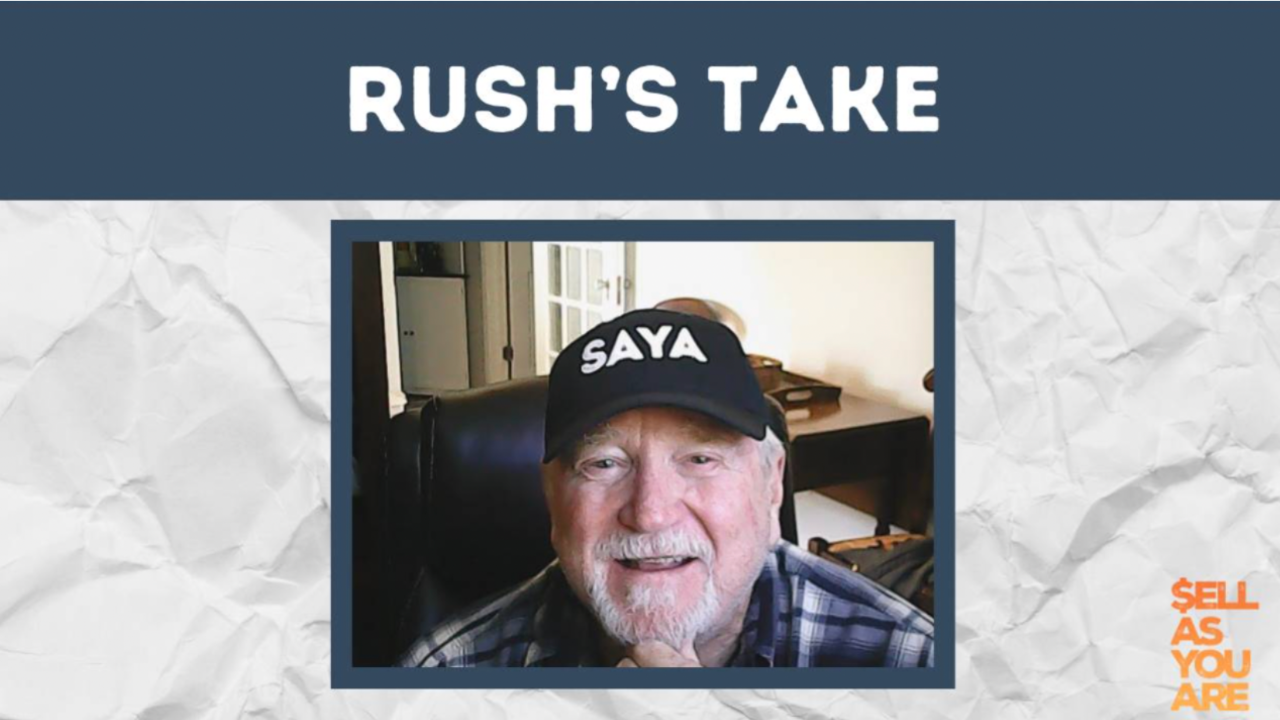Shoulda, Coulda, Woulda #14 with Rush
Oct 15, 2025
Shoulda’, Coulda’, Woulda’: Listening to Learn
"What the hell was that?" You leave a call having tried a SAYA Sale. It doesn't work the way it was supposed to.
- What actually happened and why?
- I wish I woulda’...!
- Now that it’s over, what could I do?
Send me a selling situation you’ve encountered that didn’t go the way you expected. I’ll attempt an autopsy what could help you and others to avoid those pitfalls. 📧 [email protected]
Here’s a situation that didn’t come to me as an inbound “help me”. It was a straw-that-broke-the-camel’s-back occurrence which has become more and more prevalent… and I even pointed it out as a prediction in an early-COVID blog I wrote. See if this doesn’t resonate with you.
Whether the situation arises in the dynamic of the meeting: Live, face-to-face classroom or a video one-on-one, the “listener” has so many options – notetaking, responding to classroom discussions, interacting with other inbound conversants, playing video games, and on-and-on.
There’s an art to both sides of these environments we now accept as normal. For today, let’s assume you’re the “seller”. That also makes you the “listener.”
Why It Matters in Sales
- Uncover Real Needs: Customers rarely state their true problems up front.
- Build Trust Fast: People buy from those who make them feel understood.
- Differentiate Yourself: Most salespeople talk too much — great ones listen better.
Mindset Shift: Pitching → Learning
|
“Pitching” Mindset ❌ |
“Learning” Mindset ✅ |
|
Waits to talk |
Seeks to understand |
|
Focuses on features |
Focuses on problems & impact |
|
Assumes needs |
Discovers needs |
|
Tries to convince |
Guides through discovery |
Sales Listening Behaviors
- Pause — Resist the urge to jump in after a buying signal.
- Ask high-value questions:
- “Tell me more about that challenge.”
- “Why is this important to your business now?”
- “What happens if this isn’t addressed?”
- Reflect back what you heard to confirm understanding.
- Listen for emotion & motivation beneath the surface.
- Take notes to show respect and capture details.
Listening to Learn in Sales Conversations
|
Moment |
Typical Approach |
Listening-to-Learn Approach |
|
Discovery |
Rapid-fire questions |
Slow down, explore deeply |
|
Objection |
Defend or overcome |
Understand root cause |
|
Presentation |
Show features |
Connect to what they said matters |
|
Closing |
Push for yes |
Clarify decision criteria, confirm alignment |
Daily Sales Practice
- Choose one prospect conversation each day to practice intentionally.
- Set intention: “Learn something new about their world.”
- During the call, focus 70% on listening, 30% on speaking.
- Afterward, reflect:
- What did I learn that I wouldn’t have known if I talked more?
- Did I reflect and clarify their key issues?
- Where did I rush or assume?
Sales Multiplier
Listening to Learn helps you:
- Discover deeper pain → craft relevant solutions.
- Uncover the prospect’s commitment → learn buying process.
- Build credibility → be seen as a trusted advisor.
- Earn the right to ask if/then questions → and get honest responses.
- Win more deals → because buyers feel understood, not sold to.
You are responsible for maintaining the learner mode. Not all “buyers” are going to be as forthcoming as the seller would hope. If they have something you want to learn (which should be indicated by your presence in the scene) it is your responsibility to glean from the information disseminated, the information you seek.
Stay “in the moment”.
Listen aggressively.
Empathize.
Ask questions to clarify.
Reflect and acknowledge.
Need discovery builds trust.